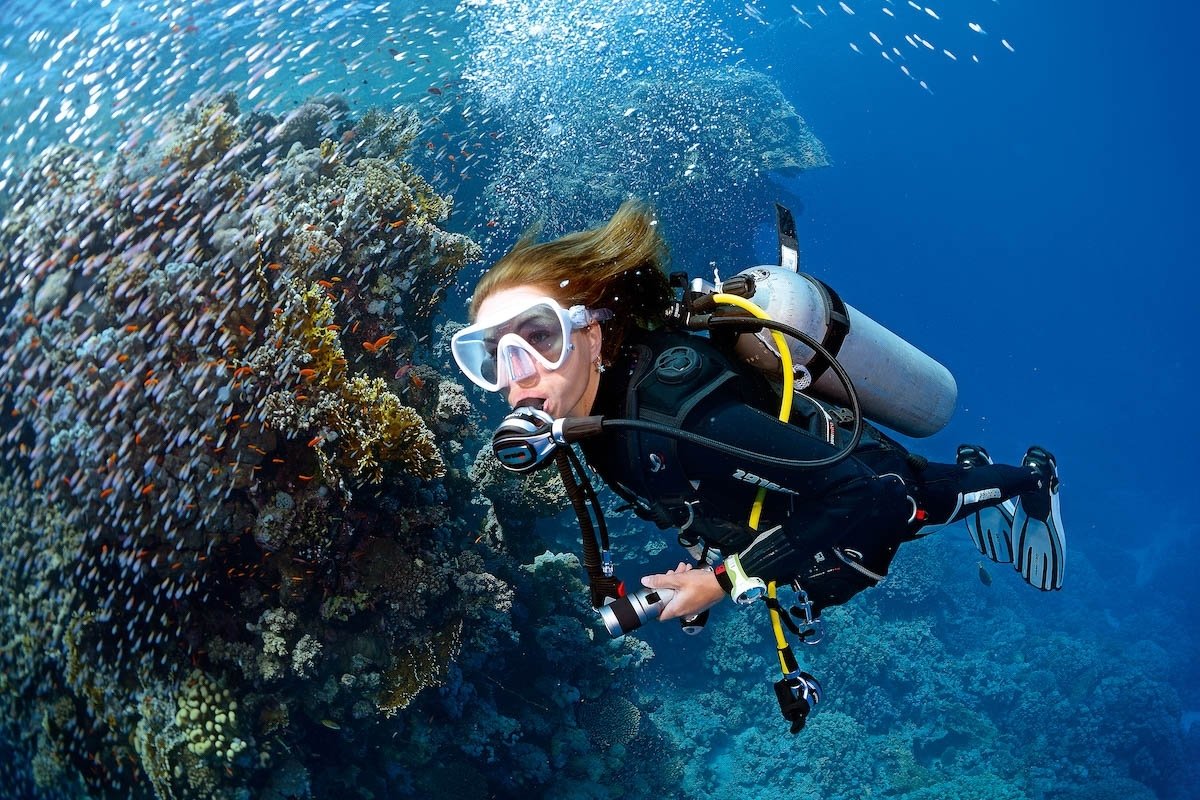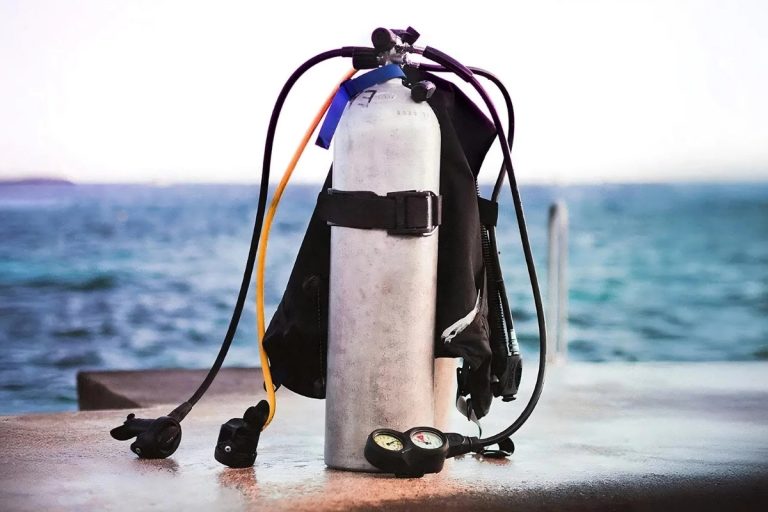- Current Safety Standards for Modern Dive Centers
- DAN’s Safety Programs and Resources
- Training for Diving Professionals
- Return to Diving Safely
- Preventing Diving Injuries
- Dive Operation Safety
- Community Engagement and Support
- Additional Resources for Dive Centers
- Frequently Asked Questions
- Enhancing Safety in the Diving Community
Current Safety Standards for Modern Dive Centers
The diving industry continues to evolve with new safety protocols and enhanced risk management strategies. Today’s dive centers face increased responsibility for maintaining comprehensive safety standards that protect both staff and customers. Recent developments in safety management have shifted focus toward proactive hazard identification rather than reactive incident response.
Modern dive centers must now implement systematic approaches to safety that go beyond basic certification requirements. This includes regular safety audits, updated emergency procedures, and continuous staff training programs. The integration of technology in safety monitoring has also become crucial, with digital logbooks and real-time communication systems becoming standard practice.
Professional dive operators are recognizing that safety excellence directly impacts business success. Centers that prioritize comprehensive safety programs often see improved customer retention, reduced insurance costs, and enhanced reputation within the diving community. The investment in robust safety systems pays dividends through reduced liability and increased customer confidence.
DAN’s Safety Programs and Resources
The Divers Alert Network has significantly expanded its support for dive centers through comprehensive safety programs designed specifically for diving professionals. These initiatives provide structured frameworks for implementing effective safety management systems that address the unique challenges faced by commercial diving operations.
DAN’s safety programs encompass everything from basic safety protocols to advanced risk assessment methodologies. The organization has developed specialized resources that help dive centers identify potential hazards before they become incidents, creating a culture of preventive safety rather than reactive response.
Overview of Safety Tips for Dive Operators
The newly developed Safety Tips for Dive Operators guide represents a comprehensive resource tailored specifically for commercial diving operations. This guide addresses common operational challenges and provides practical solutions for maintaining safety standards across all aspects of dive center management.
The guide covers essential topics including customer briefings, equipment maintenance protocols, and emergency response procedures. It also addresses staff training requirements and provides templates for safety documentation that centers can customize to their specific operations.
Hazard Identification and Risk Assessment (HIRA) Program
The HIRA program introduces a systematic approach to identifying and managing potential diving hazards before they result in incidents. This proactive methodology helps dive centers develop comprehensive risk management strategies tailored to their specific operational environment and customer demographics.
Implementation of the HIRA program involves regular assessment of diving conditions, equipment status, and operational procedures. Centers learn to document potential risks and develop mitigation strategies that reduce the likelihood of incidents while maintaining operational efficiency.
Free Downloadable Safety Resources
DAN provides an extensive library of downloadable safety resources including checklists, advisories, and procedural guidelines. These materials are regularly updated to reflect current best practices and emerging safety concerns within the diving industry.
The downloadable resources include emergency action plans, equipment inspection checklists, and customer safety briefing templates. These materials help standardize safety procedures across different dive centers while allowing for customization based on local conditions and regulations.
Online and Live Safety Training Options
Training resources have been expanded to include both online modules and live instruction opportunities. The online training platform allows dive center staff to complete safety training at their own pace while maintaining comprehensive tracking of completion and competency levels.
Live training sessions provide hands-on experience with emergency procedures and allow for real-time interaction with safety experts. These sessions often include scenario-based training that helps staff prepare for actual emergency situations they might encounter in their operations.
Commitment to Dive Community Safety
DAN’s commitment extends beyond individual dive centers to encompass the entire diving community. This holistic approach recognizes that safety improvements at one center benefit the entire industry by raising overall standards and reducing negative incidents that affect public perception of diving.
The organization actively collaborates with dive centers, training agencies, and regulatory bodies to promote consistent safety standards across the industry. This collaborative approach ensures that safety improvements are sustainable and widely adopted throughout the diving community.
Training for Diving Professionals
Professional development in diving safety requires ongoing commitment to learning and skill enhancement. The diving industry has recognized that initial certification represents just the beginning of a professional’s safety education journey, with continuous training being essential for maintaining competency and staying current with evolving best practices.
Modern training programs address not only technical diving skills but also risk management, customer service safety considerations, and emergency response coordination. This comprehensive approach ensures that diving professionals are prepared for the full range of responsibilities they face in commercial diving operations.
Importance of Ongoing Training
Continuous education in diving safety helps professionals stay current with evolving industry standards and emerging safety technologies. Regular training updates ensure that dive center staff maintain proficiency in emergency procedures and remain familiar with the latest safety equipment and protocols.
Ongoing training also addresses the natural degradation of emergency response skills that occurs without regular practice. By participating in regular training sessions, diving professionals maintain the muscle memory and decision-making capabilities essential for effective emergency response.
Types of Training Programs Available
Available training programs range from basic safety refreshers to advanced emergency management courses. Specialized programs address specific aspects of dive center operations including equipment maintenance, customer safety briefings, and incident response coordination.
Advanced training options include rescue diving techniques, first aid and oxygen administration, and dive accident management. These programs provide diving professionals with the skills necessary to handle emergency situations effectively while maintaining calm and professional demeanor.
Incident Monitoring and Reporting
Effective incident monitoring systems help dive centers track safety performance and identify areas for improvement. Modern reporting systems capture not only actual incidents but also near-miss events that provide valuable learning opportunities without the consequences of actual accidents.
The data collected through incident monitoring helps identify patterns and trends that might not be apparent from individual events. This information enables dive centers to make informed decisions about safety improvements and resource allocation for maximum risk reduction.
Supporting Medical Facilities and Recompression Chambers
Dive centers must maintain relationships with appropriate medical facilities and understand the capabilities and limitations of local emergency medical services. This includes knowledge of recompression chamber locations, availability, and transportation logistics for diving emergency situations.
Regular communication with medical facilities helps ensure that emergency response plans remain current and effective. Dive centers should also maintain updated emergency contact information and understand the procedures for activating emergency medical services when needed.
Accessibility Features for Training
Modern training programs incorporate accessibility features that accommodate diverse learning styles and physical capabilities. These features ensure that all diving professionals can participate effectively in safety training regardless of individual limitations or preferences.
Accessibility considerations include multiple learning modalities, flexible scheduling options, and accommodations for individuals with disabilities. This inclusive approach ensures that safety training reaches all members of the diving community and maintains consistent safety standards across diverse populations.
Return to Diving Safely
The Return to Diving Safely initiative addresses the unique challenges faced by divers who are returning to the water after extended periods of inactivity. This program recognizes that diving skills and safety awareness can deteriorate during breaks from regular diving activity, requiring systematic refresher programs to ensure safe return to diving activities.
The program provides structured guidelines for assessing readiness to return to diving and identifies specific areas that require attention before resuming regular diving activities. This systematic approach helps prevent incidents that might occur when divers overestimate their current capabilities or underestimate the effects of time away from diving.
Evaluating Health Before Diving
Health assessment for returning divers involves more than basic fitness evaluation. The assessment process considers changes in medical status, medication use, and overall physical condition that might have occurred during the diving hiatus.
Medical considerations include cardiovascular fitness, respiratory function, and any new medical conditions or medications that might affect diving safety. The evaluation process helps identify potential contraindications to diving and ensures that returning divers understand any new limitations or precautions necessary for safe diving.
Skills Review for Returning Divers
Skills assessment focuses on fundamental diving competencies including buoyancy control, emergency procedures, and equipment operation. The review process identifies areas where refresher training might be beneficial and ensures that returning divers can demonstrate proficiency in essential safety skills.
The skills review process typically includes both knowledge assessment and practical demonstration of diving skills. This comprehensive evaluation helps identify specific areas where additional training or practice might be needed before returning to regular diving activities.
Equipment Check Guidelines
Equipment assessment for returning divers involves thorough inspection of all diving gear to ensure proper function and safety compliance. Extended storage periods can affect equipment condition, making comprehensive inspection essential before returning to diving activities.
The equipment check process includes inspection of regulators, buoyancy control devices, masks, fins, and exposure suits. Special attention is given to equipment that might have been affected by storage conditions or that requires regular maintenance regardless of use frequency.
Preventing Diving Injuries
Injury prevention in diving requires understanding of common hazards and implementation of systematic risk reduction strategies. Modern approaches to diving safety emphasize proactive hazard identification and risk mitigation rather than reactive response to incidents after they occur.
Effective injury prevention programs address both environmental hazards and human factors that contribute to diving incidents. This comprehensive approach recognizes that most diving injuries result from combinations of factors rather than single causes, requiring multifaceted prevention strategies.
Common Diving Hazards
Environmental hazards in diving include decompression sickness, nitrogen narcosis, oxygen toxicity, and marine life encounters. Equipment-related hazards involve regulator malfunctions, buoyancy control problems, and exposure suit failures that can compromise diver safety.
Human factors contributing to diving injuries include inadequate training, poor judgment, panic responses, and failure to follow established safety procedures. Understanding these hazard categories helps dive centers develop comprehensive safety programs that address all potential sources of risk.
Proactive Measures to Reduce Risks
Risk reduction strategies include comprehensive pre-dive safety briefings, thorough equipment inspections, and careful dive planning that considers environmental conditions and diver experience levels. These proactive measures help prevent incidents by addressing potential problems before they develop into emergencies.
Environmental monitoring and dive site assessment help identify changing conditions that might affect dive safety. Regular updates to dive site information and condition assessments ensure that dive plans remain appropriate for current conditions and diver capabilities.
Importance of Incident Reporting
Comprehensive incident reporting systems capture valuable safety information that benefits the entire diving community. Effective reporting includes not only actual incidents but also near-miss events that provide learning opportunities without the consequences of actual accidents.
Incident analysis helps identify trends and patterns that might not be apparent from individual events. This information enables the diving community to develop targeted safety improvements and share lessons learned across different diving operations and geographic regions.
Dive Operation Safety
Safety in dive operations requires systematic implementation of comprehensive safety protocols that address all aspects of commercial diving activities. Modern dive centers must balance operational efficiency with rigorous safety standards to ensure both customer satisfaction and accident prevention.
Effective operational safety programs integrate safety considerations into every aspect of dive center operations, from initial customer contact through post-dive activities. This comprehensive approach ensures that safety remains a priority throughout the entire customer experience.
Key Safety Protocols for Dive Operations
Essential safety protocols include standardized pre-dive briefings, equipment inspection procedures, and emergency response plans. These protocols must be consistently implemented across all diving activities and regularly updated to reflect current best practices and changing conditions.
Safety protocols should address customer assessment, dive planning, equipment preparation, and post-dive procedures. Clear documentation and regular review of these protocols help ensure consistent implementation and continuous improvement of safety standards.
Training Staff on Safety Procedures
Staff training programs must ensure that all dive center personnel understand their roles in maintaining safety standards and responding to emergency situations. Training should address both routine safety procedures and emergency response protocols.
Regular training updates help staff maintain proficiency in safety procedures and stay current with evolving best practices. Training programs should include both theoretical knowledge and practical skills development to ensure comprehensive competency in safety management.
Emergency Response Planning
Comprehensive emergency response plans address various potential emergency scenarios and provide clear procedures for staff response. These plans should be regularly tested through drills and updated based on lessons learned from training exercises and actual incidents.
Emergency response planning includes coordination with local emergency services, medical facilities, and evacuation procedures. Regular communication with emergency service providers helps ensure that response plans remain current and effective when needed.
Community Engagement and Support
Community support initiatives strengthen the overall safety culture within the diving community by promoting collaboration and shared responsibility for accident prevention. These programs recognize that diving safety benefits from collective effort rather than individual action alone.
Effective community engagement involves collaboration between dive centers, training agencies, equipment manufacturers, and regulatory bodies to promote consistent safety standards and share best practices across the industry.
Collaborating with Local Dive Centers
Inter-center collaboration promotes sharing of safety information, best practices, and lessons learned from various operational experiences. This collaboration helps raise overall safety standards within local diving communities and provides mutual support for safety improvement initiatives.
Collaborative efforts include sharing information about local diving conditions, equipment recommendations, and safety innovations. Regular communication between dive centers helps ensure that safety improvements are widely adopted and that emerging hazards are quickly identified and addressed.
Engaging Divers in Safety Initiatives
Customer engagement in safety initiatives helps create a culture where safety is valued and supported by all participants in diving activities. This engagement includes education about safety procedures and encouragement of active participation in safety protocols.
Diver engagement programs include safety education, incident reporting encouragement, and recognition of safe diving practices. These programs help create an environment where safety is seen as a shared responsibility rather than solely the obligation of dive center staff.
Promoting Safe Diving Practices
Community-wide promotion of safe diving practices helps establish consistent safety expectations and behaviors across different diving operations and geographic regions. This promotion includes education campaigns, safety recognition programs, and sharing of safety success stories.
Promotion efforts address both individual diver behavior and systemic safety improvements within diving operations. By highlighting successful safety practices and their benefits, these programs encourage widespread adoption of effective safety measures.
Additional Resources for Dive Centers
Additional resources for dive centers provide ongoing support for safety program development and implementation. These resources help centers maintain current safety standards and continuously improve their safety performance through access to expert guidance and proven methodologies.
Resource availability includes both digital and physical materials that address various aspects of dive center safety management. Regular updates to these resources ensure that dive centers have access to current information and emerging best practices.
Accessing Safety Checklists and Advisories
Comprehensive safety checklists provide systematic approaches to routine safety procedures and help ensure that important safety steps are not overlooked during busy operational periods. These checklists cover equipment inspection, dive planning, and emergency preparedness activities.
Safety advisories provide timely information about emerging hazards, equipment recalls, and safety recommendations based on recent incident analysis. Regular review of safety advisories helps dive centers stay current with evolving safety concerns and recommended responses.
Utilizing Online Training Resources
Online training platforms provide flexible access to safety education that accommodates varying schedules and learning preferences. These resources include interactive modules, video demonstrations, and assessment tools that help ensure comprehensive understanding of safety concepts.
Digital training resources allow for self-paced learning while maintaining tracking of completion and competency levels. This flexibility helps dive centers ensure that all staff members receive appropriate safety training without disrupting operational schedules.
Finding Medical Support Resources
Medical support resources help dive centers establish appropriate relationships with medical facilities and understand the capabilities of local emergency medical services. These resources include directories of diving medicine specialists and recompression chamber locations.
Medical support information includes emergency contact procedures, transportation logistics, and coordination protocols for diving emergency situations. Regular updates to medical support information ensure that emergency response plans remain current and effective when needed.
Frequently Asked Questions
What are the current safety standards for dive centers?
Modern dive centers must implement systematic approaches to safety that include regular audits, updated emergency procedures, and continuous staff training.
How can dive centers access safety resources?
DAN provides a library of downloadable safety resources, including checklists and emergency action plans, which dive centers can customize for their operations.
What is the importance of ongoing training for diving professionals?
Continuous training ensures that diving professionals stay current with evolving safety standards and maintain proficiency in emergency procedures.
How does community engagement contribute to diving safety?
Community engagement promotes collaboration among dive centers, training agencies, and divers, creating a culture of shared responsibility for safety.
What are some common diving hazards?
Common hazards include decompression sickness, equipment malfunctions, and human factors like inadequate training and panic responses.
Enhancing Safety in the Diving Community
By focusing on comprehensive safety measures and fostering a culture of shared responsibility, the diving industry can significantly improve safety standards and reduce incidents, ultimately ensuring safer experiences for both divers and operators.




